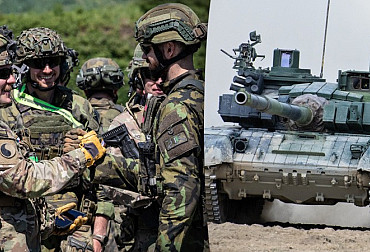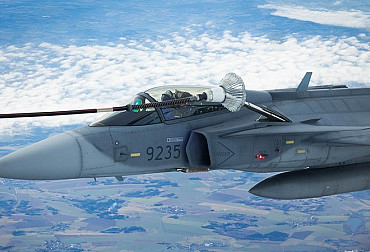PERUN: no testing, just correspondence war
It’s an open secret that the purchase of new equipment for the Czech Army has been accompanied by long-term problems. Soldiers meanwhile are waiting unsuccessfully to new helicopters or radars. Critical voices have been also raised from the ranks of the professional, amateurish and political public in connection with the ongoing tender for the purchase of infantry fighting vehicles. And when the Czech Armed Forces finally chose equipment, its incorporation into the “service” is often preceded by a very thorny path.
This is, among others, a case of the Perun fighting vehicle determined for the Special Forces. It is an exclusively Czech product, developed and manufactured in SVOS Company from Přelouč, which long-term focuses on vehicles with ballistic and countermine protection. Domestic origin is essential because in case of purchasing a foreign product, it would mean a higher price at least due to necessity to buy license and to ensure commercial representation, whereas the financial are to be taken away abroad. And last but not least factor is that there is interest to this vehicle abroad, and domestic references could significantly help the manufacturers. For example, Perun was one of few Czech military products, which were examined in detail by the Swedish Minister of Defence Peter Hultqvista in IDET 2019 Trade Fair.

Picture: Perun 4x4 off-road fighting vehicle
Nothing indicated at the beginning that testing of Perun could be accompanied by problems. Control tests took place in the end of the half-year of 2018, which confirmed that the vehicle meets the contractual conditions. After having performed the control tests, the Perun was permitted to participate in combat testing, which began in late July of 2018. The turning point occurred in October of the same year, when the combat tests were interrupted. As we were informed by our sources, the committee asked for non-standard verification of parameters which were not a subject of the combat tests. No other test therefore took place until the end of June 2019 even though the fighting vehicle was ready for testing, what was repeatedly declared by the manufacturer. In addition, the manufacturer carried out a lot of modifications at its own expenses on request of the user and based on its additional requirements. It was primarily extension of the ballistic protection above the frame of requirements of the original specification and of the concluded purchasing contract. These modifications increased combat crew safety, user’s value of the vehicle and, naturally, its weight. And it was just its weight what the Committee for combat testing paradoxically uses as the main and in principle solitary serious argument against the Perun vehicle, despite the fact that the user, i.e. The army, asked for this modification!
Instead of combat testing, prolonged correspondence war was initiated between the manufacturer and the Armament and Acquisition Section of the Ministry of Defence of the Czech Republic.
In context with the occurred situation, the manufacturer rather logically asks a lot of questions. For example, what is a reason of the “problem” with the vehicle that successfully passed the control tests with the participation of representatives of the user (as members of the committee for the control and later combat tests), who approved the technical parameters of the vehicle during these tests? The same people, absolutely incomprehensibly, later – in the consequential combat tests – began to refuse these parameters and to come with new and new non-standard requirements.
And what is interesting here is why the Ministry of Defence, which, through its Minister, promises support for the domestic military industry, in this situation is behind the decision of the Committee for combat tests, the activity of which shows significant shortcomings and is aimed more or less evidently to ensure that the Czech armoury failed. In connection to this matter, it is noteworthy that - like they say on the sidelines as well as in some media - the British Supacat fighting vehicle could be presented as the “counterbalance” and possible substitution of Perun. All this despite the fact that Supacat hasn’t applied to the tender for the vehicle for the Czech Army. The reason for it is that the request of the Ministry of Defence of the Czech Republic for a new vehicle for the Special Forces specified such a level of ballistic and countermine protection of soldiers, which any other type from the Supacat model row doesn’t achieve and even cannot achieve from the technical point of view.

Picture: Supacat HMT 400 Jackal | Wikimedia Commons
And last but not least – is the matter of the fighting vehicle for the Special Forces the unique approach which has absolutely concrete causes? Or is it an implemented practice in the Czech Army or the Ministry of Defence used for the selection and evaluation of new fighting equipment? In any case, it will be assuredly interesting to follow future control and combat tests of the new infantry fighting vehicles manufactured by renowned companies (but not a Czech arms factory) with huge political-economical influence and a crowd of top-class lawyers. It is clear that this giant tender will be in the centre of far bigger (including medial) attention, and not only from the point of view of possible corruption potential, as it was in case of the Pandur armoured personnel carrier.






















